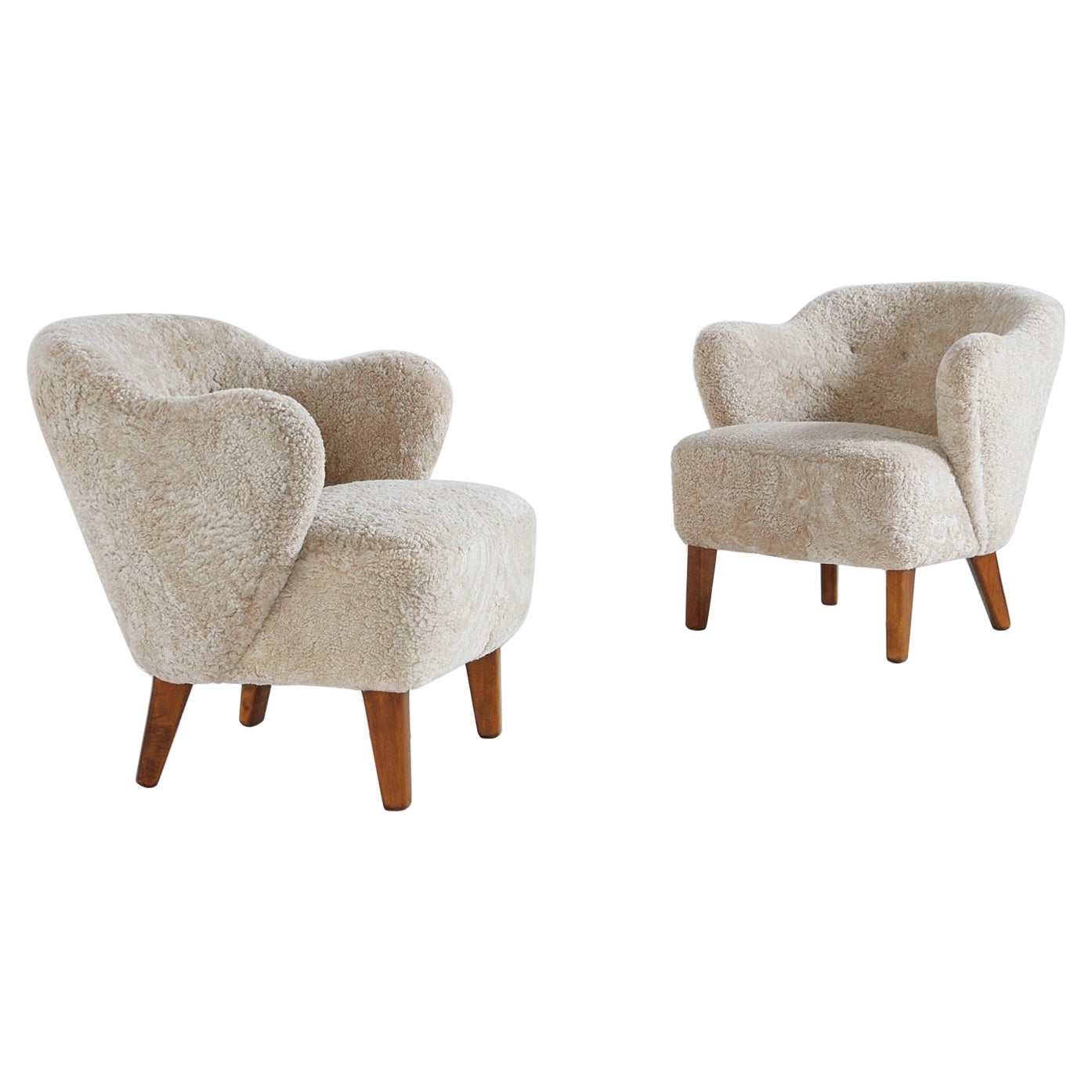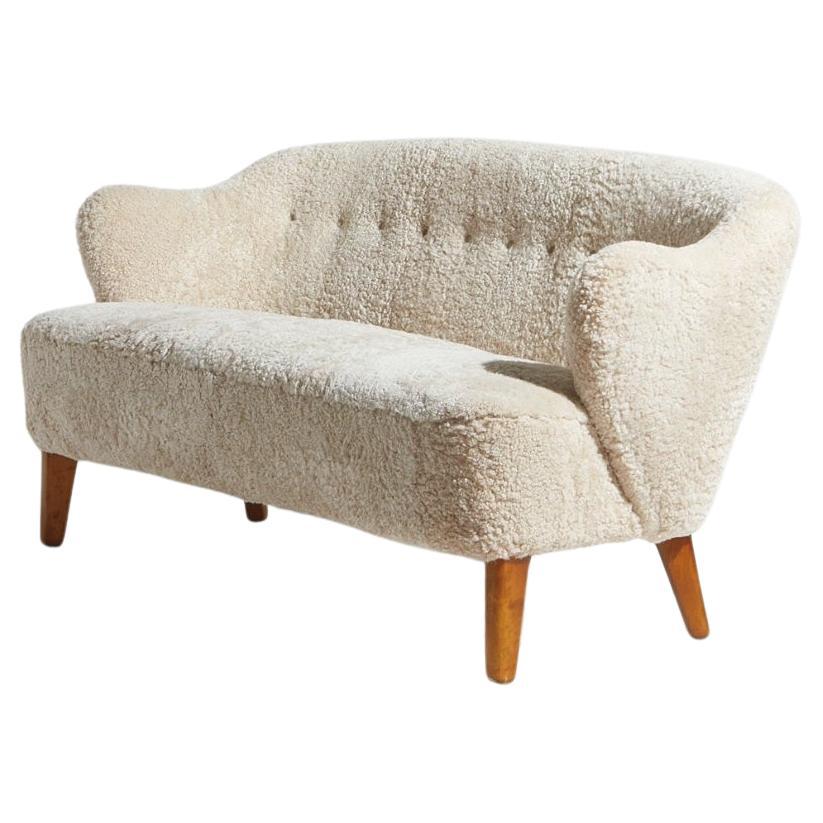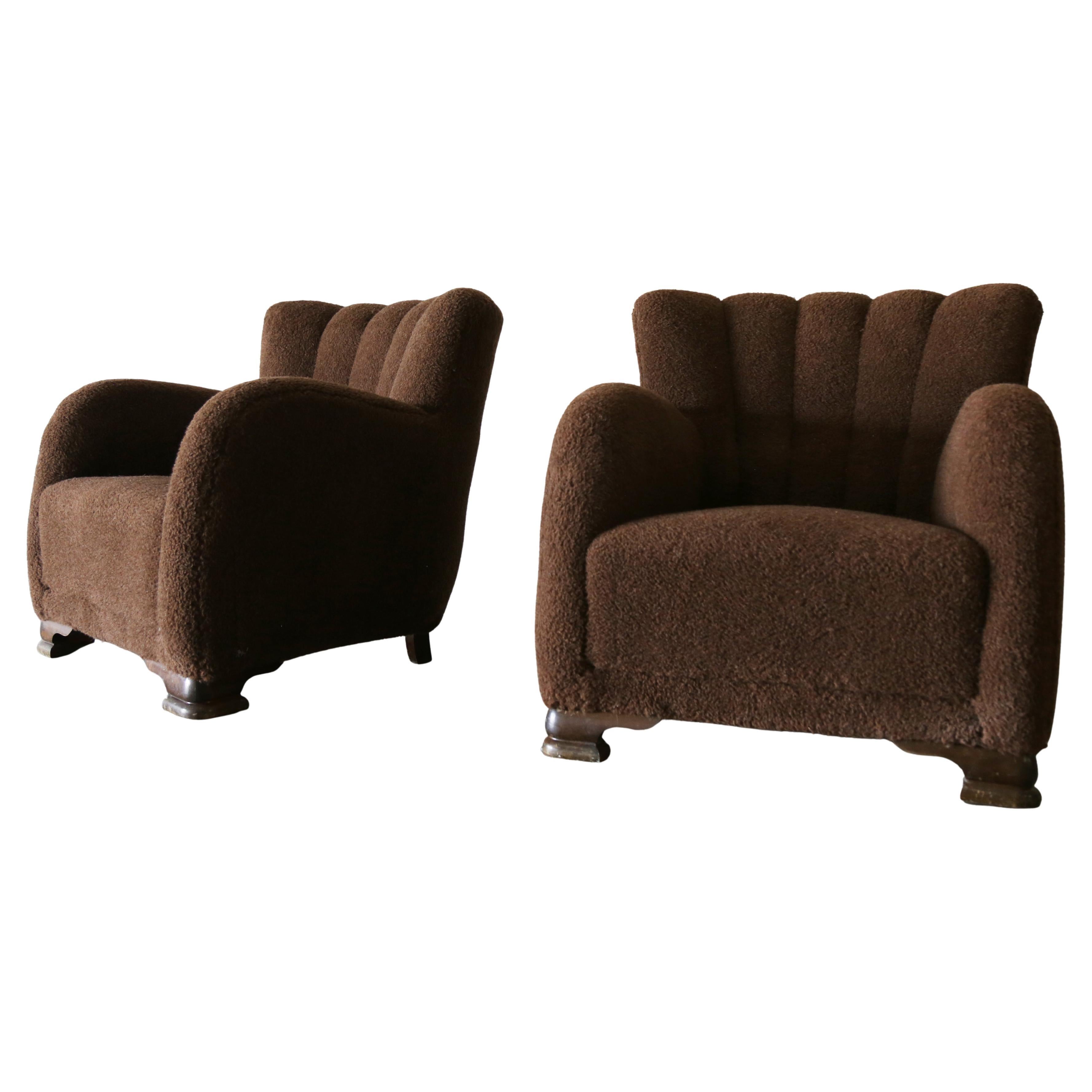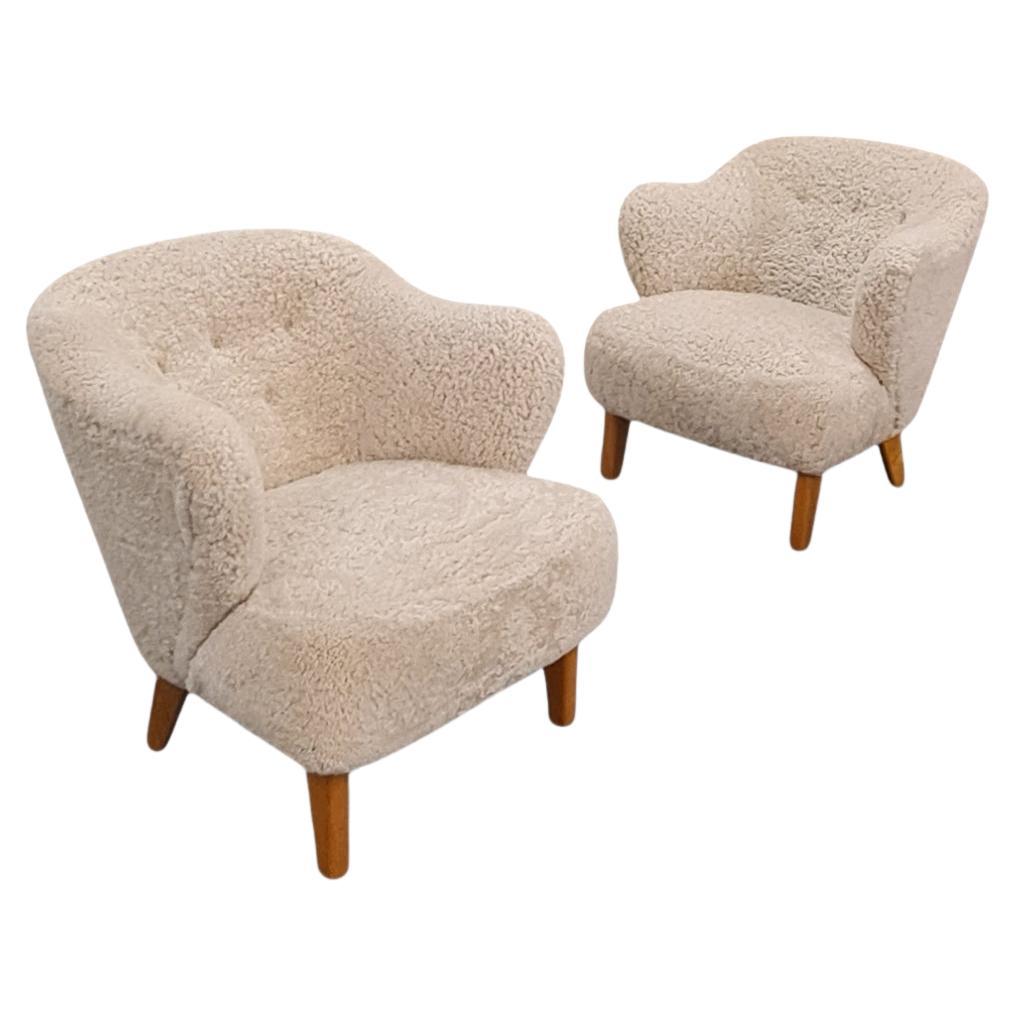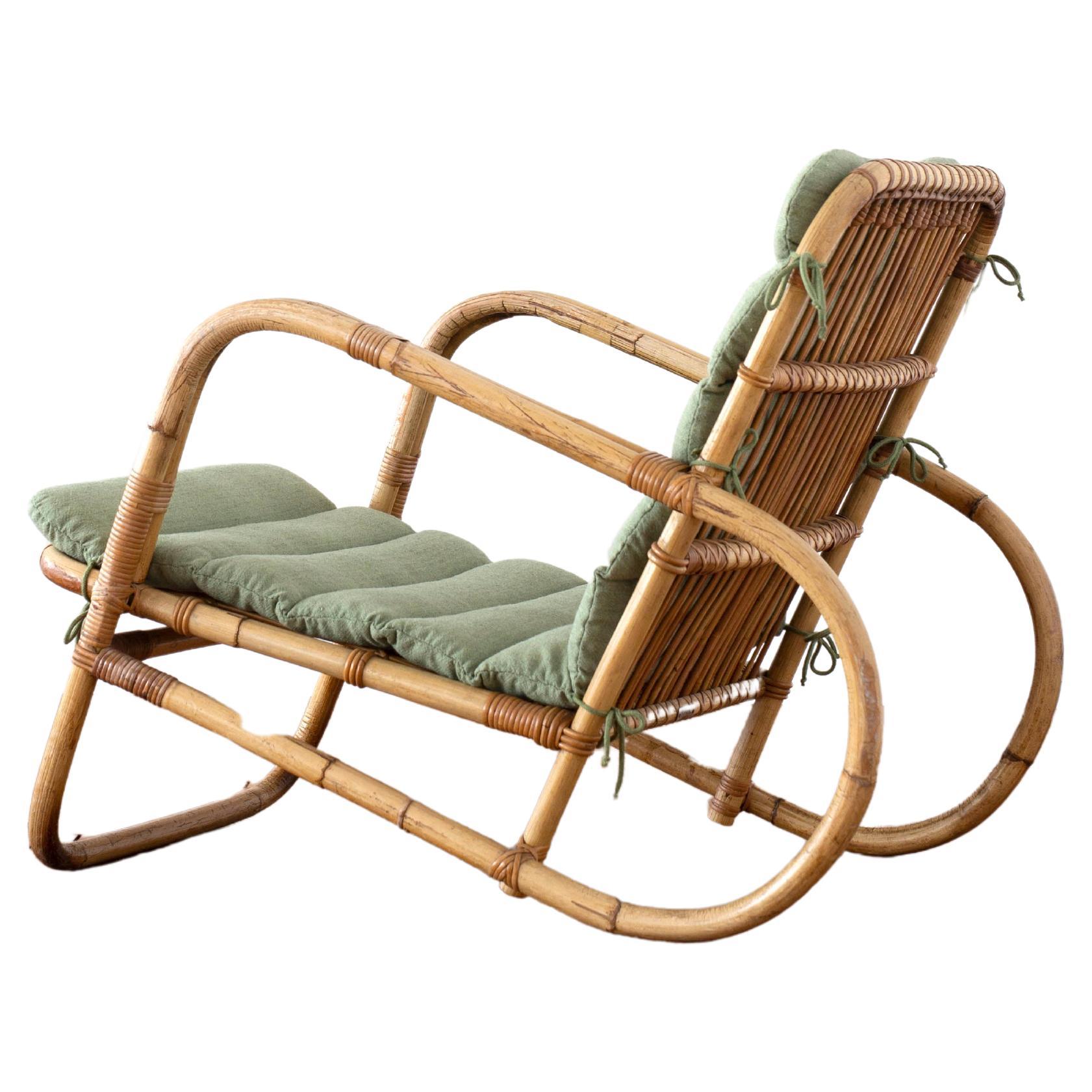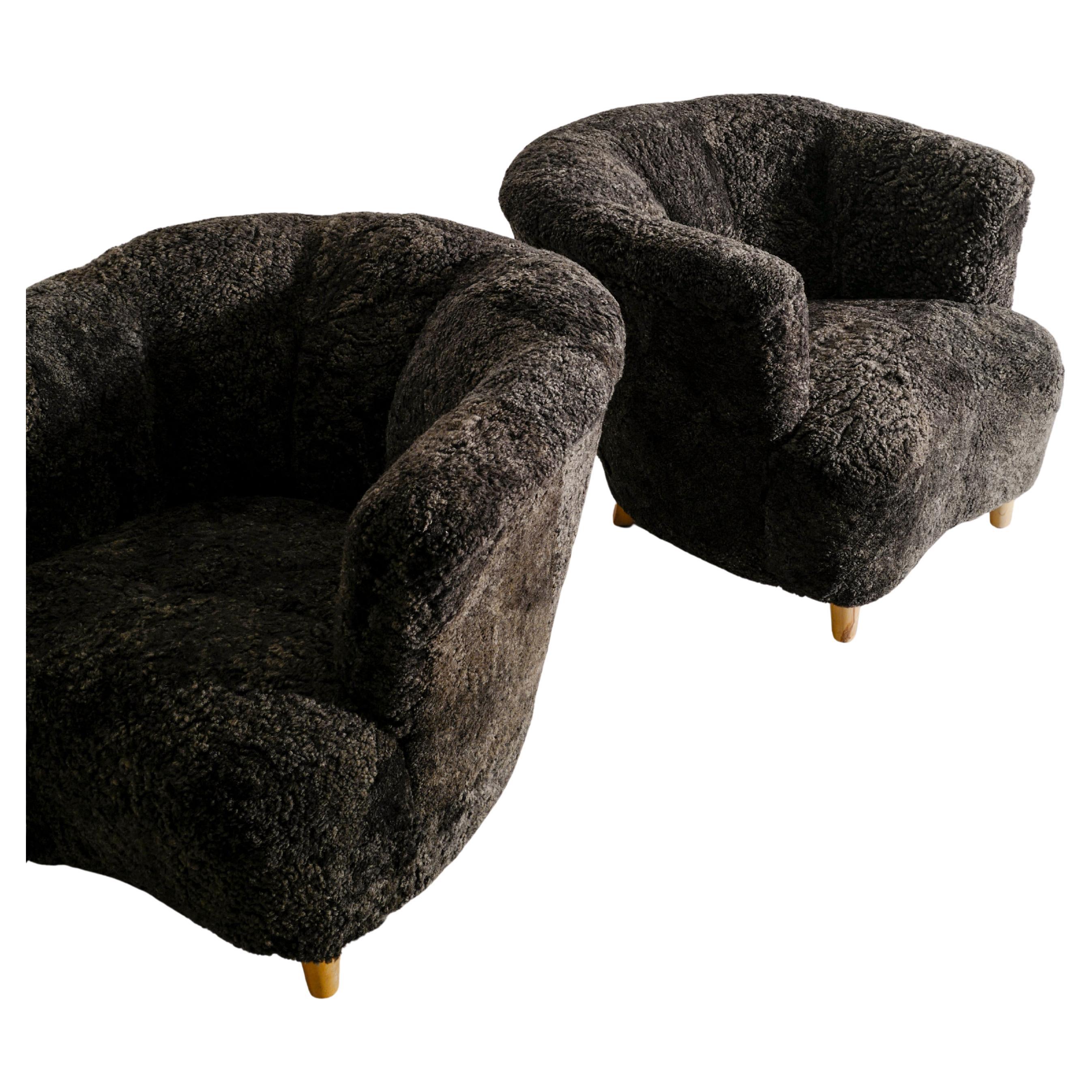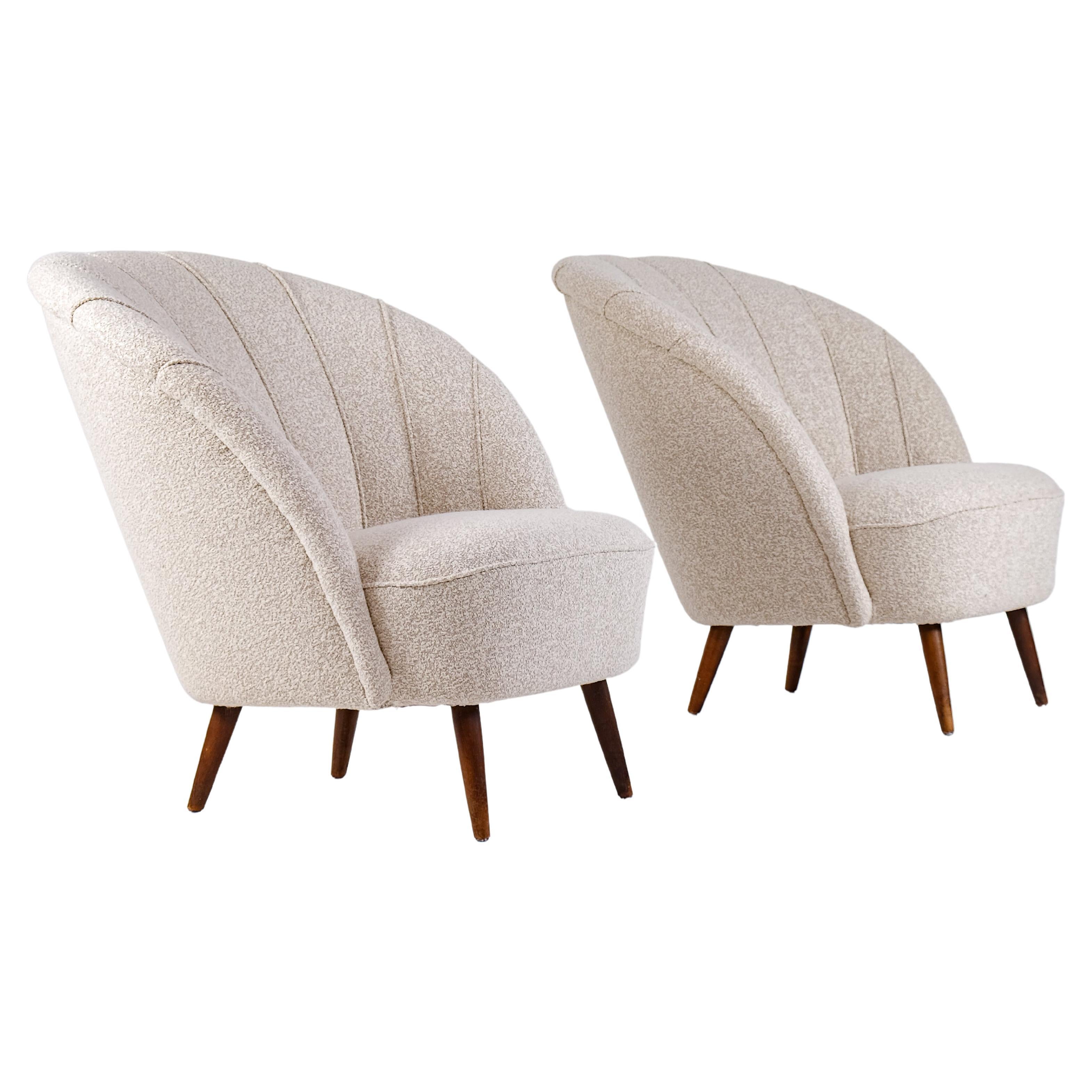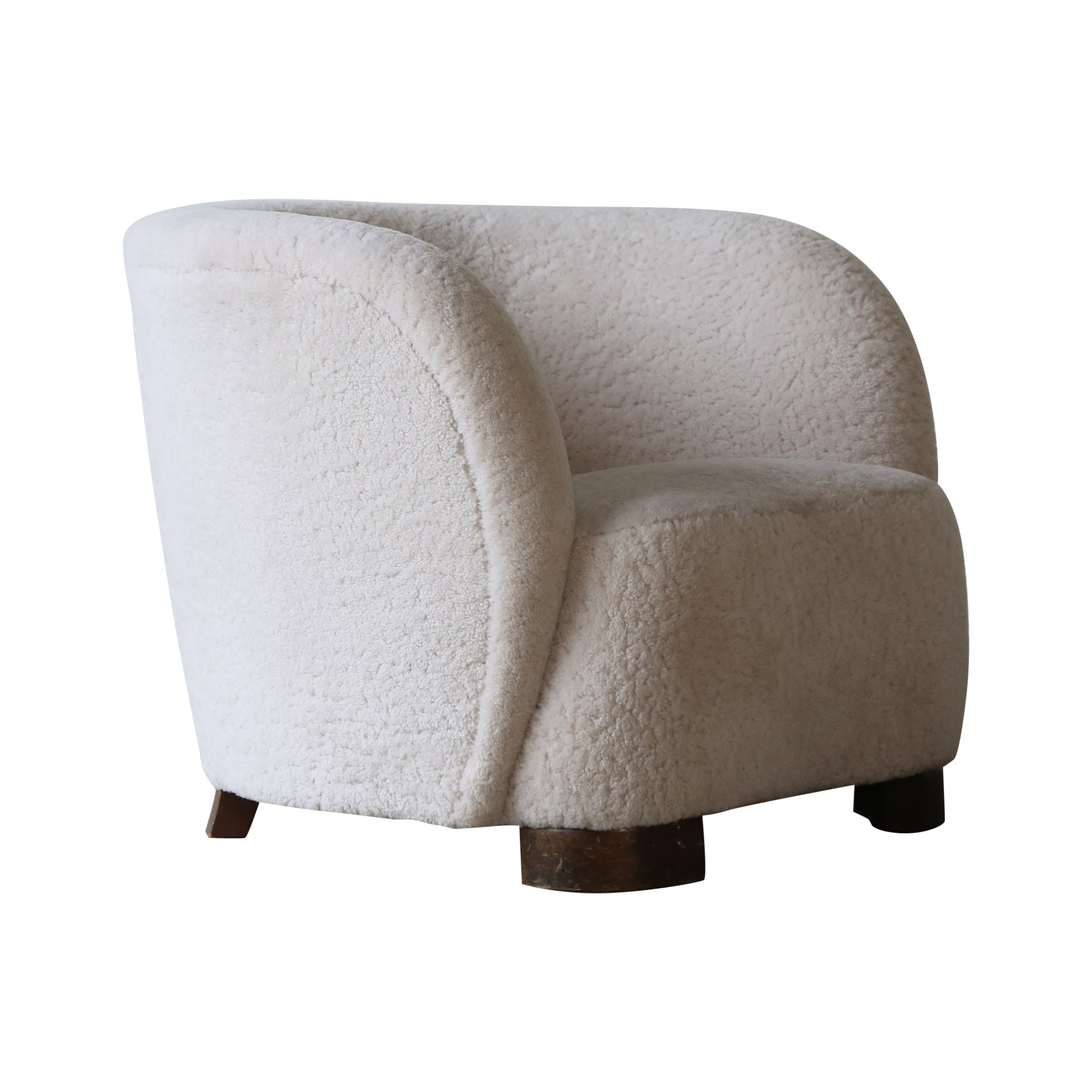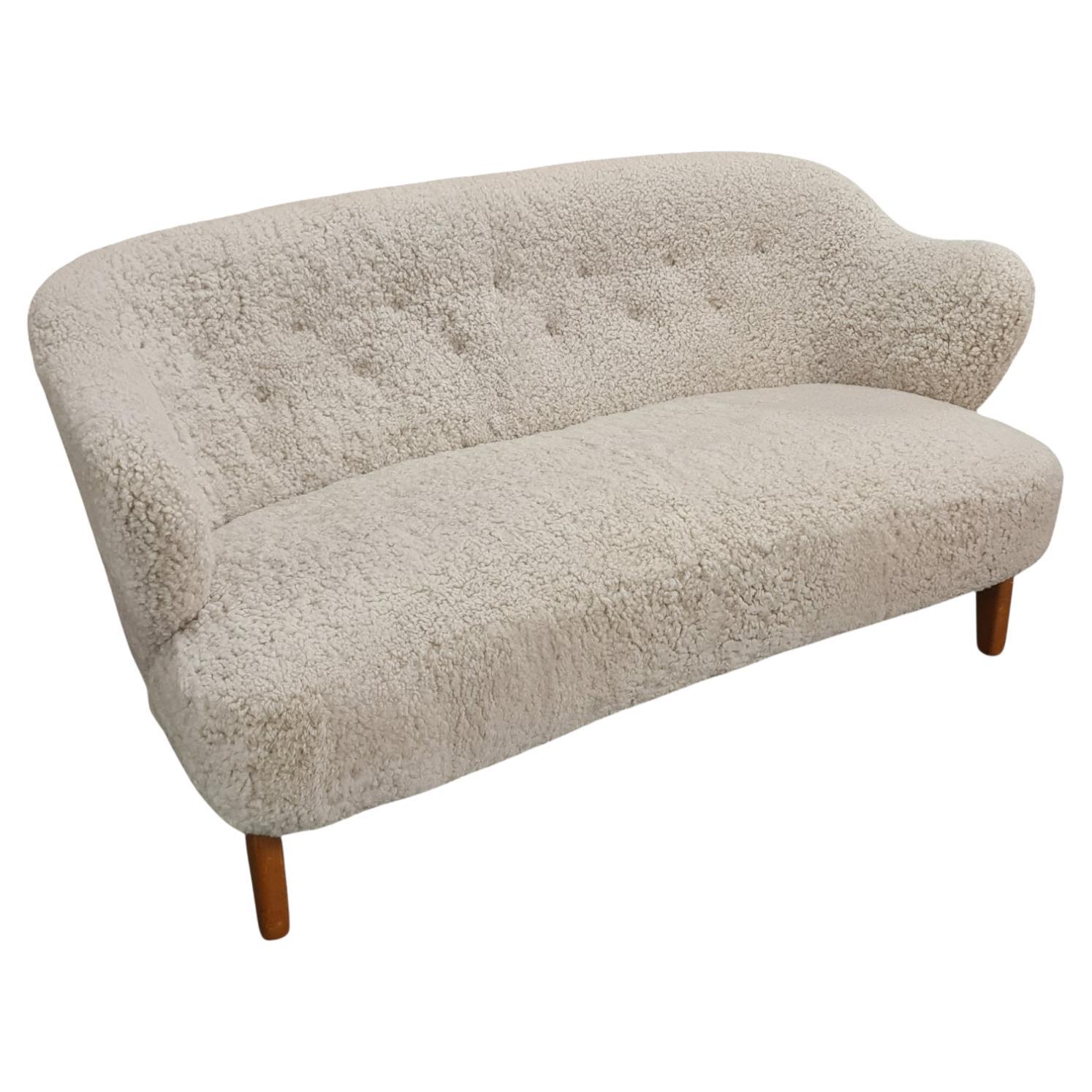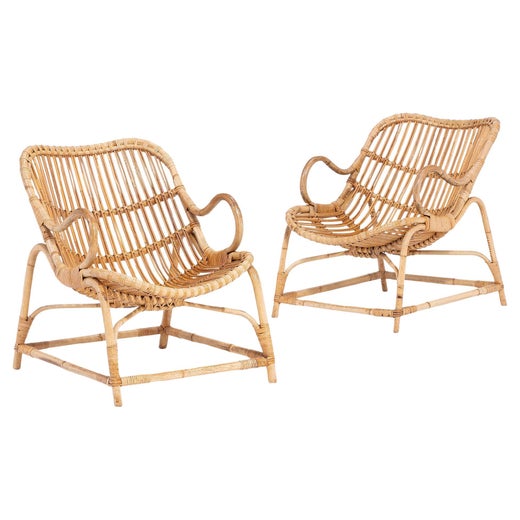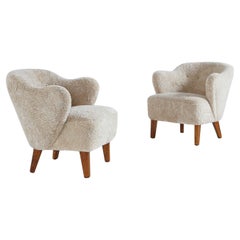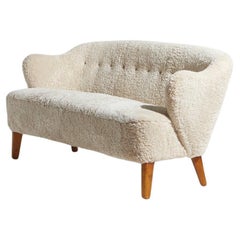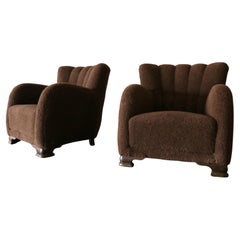
Flemming Lassen Pair of Easy Chairs in Beige Sheepskin, 1940s
View Similar Items
Flemming Lassen Pair of Easy Chairs in Beige Sheepskin, 1940s
About the Item
- Creator:Jacob Kjaer (Cabinetmaker),Flemming Lassen (Designer)
- Dimensions:Height: 29.14 in (74 cm)Width: 28.35 in (72 cm)Depth: 29.14 in (74 cm)Seat Height: 14.97 in (38 cm)
- Sold As:Set of 2
- Style:Scandinavian Modern (Of the Period)
- Materials and Techniques:
- Place of Origin:
- Period:
- Date of Manufacture:1940
- Condition:Wear consistent with age and use.
- Seller Location:Copenhagen, DK
- Reference Number:1stDibs: LU1081215817941
Flemming Lassen
Architect Flemming Lassen was as noted for his furnishings as he was for his buildings, and he created bedroom furniture and other pieces specifically for the inviting interiors he brought to fruition. The Danish modernist is credited by many for his role in introducing his native country to functionalism, which prioritizes practicality over excessive ornamentation in design. Lassen is widely known for his comfortable, plush vintage sofas, lounge chairs and other seating, such as the overstuffed Tired Man armchair and Mingle sofa.
Lassen's mother and father were both painters. In the early 1900s, he and his brother — architect Mogens Lassen — began to attend boarding school where they befriended Arne Jacobsen, with whom Flemming would come to share an affinity for the principles of functionalism. Jacobsen became a leading light of Scandinavian modernism — his celebrated mid-century designs include the Swan chair and the Egg chair — and he and Flemming remained close throughout their lives, maintaining a strong personal relationship as well as a professional bond as like-minded colleagues.
Lassen and Jacobsen exchanged ideas and collaborated — the former shared his friend’s holistic approach to building projects, which is evidenced by Jacobsen’s design for the SAS Royal Hotel in Copenhagen. Jacobsen’s designs for the property encompassed everything from the architecture to interiors and furnishings. Together, Lassen and Jacobsen won an award at the “Architects Building and Housing Exhibition,” which was held at the Forum in Copenhagen in 1929. The duo was recognized for its “House of the Future,” a circular structure fitted with a then-revolutionary automatic garage door opener and windows that rolled up and down with a handle — just as they would in a car. The House of the Future has influenced Danish architecture to this day.
Flemming also often collaborated with his older brother Mogens, designing buildings and furniture alike. Mogens designed all kinds of tables and seating, and worked with the likes of Jacobsen, Finn Juhl and Ole Wanscher on various projects.
Flemming Lassen created the oak-and-sheepskin Tired Man armchair for The Copenhagen Cabinetmakers’ Guild Competition in 1935. Three years later, he designed the Mingle sofa. Both seating pieces are very popular with collectors today.
Find vintage Flemming Lassen furniture on 1stDibs.
Jacob Kjaer
After training under his cabinetmaker father and then further afield at Berlin’s Institute of Arts and Crafts Museum and in Paris, Danish furniture designer Jacob Kjær crafted classical English-inspired dining chairs, sofas and other pieces that, many decades later, are understated and elegant in any space.
Kjær returned to Copenhagen in 1926 and opened his own workshop after studying in Germany and working as a joiner in France. His collectible works have all the characteristics that are attributed to Scandinavian modernist furniture — his chairs boast gracefully sloping seat backs and arms that mirror works by designers such as Finn Juhl or Hans Wegner, while his tables and other pieces, typically crafted in teak, rosewood or mahogany, are demonstrative of the deep commitment to craftsmanship associated with likeminded artisans who hail from Nordic regions of the world.
A well-known armchair made by Kjær for use at the UN Building in New York City is the spare and sculptural FN chair. While this iconic seat was first constructed in wood and upholstered in durable leather at the designer’s studio, it was later manufactured by Christensen & Larsen and is now available from Kitani, a Japanese company that offers licensed reproductions of chairs by a range of Danish modernist designers such as Ib Kofod-Larsen, Nanna Ditzel and others.
Kjær participated in the Barcelona World Exhibition in 1929 and held leadership roles in the Arts and Crafts Committee for Export and the Danish Arts and Crafts National Association. He also chaired the Copenhagen Cabinetmakers’ Guild for a period during the 1950s. An example of one of Kjær’s armchairs is held in the Metropolitan Museum of Art.
On 1stDibs, find vintage Jacob Kjær seating, side tables, coffee tables and more.
You May Also Like
Vintage 1940s Danish Scandinavian Modern Lounge Chairs
Sheepskin, Ash
Vintage 1940s Danish Scandinavian Modern Settees
Sheepskin, Mahogany
Vintage 1940s Danish Mid-Century Modern Lounge Chairs
Sheepskin
Vintage 1950s Finnish Scandinavian Modern Sofas
Sheepskin, Wood
Vintage 1940s Danish Scandinavian Modern Lounge Chairs
Fabric, Cane, Rattan
Vintage 1940s Danish Scandinavian Modern Sofas
Bamboo
